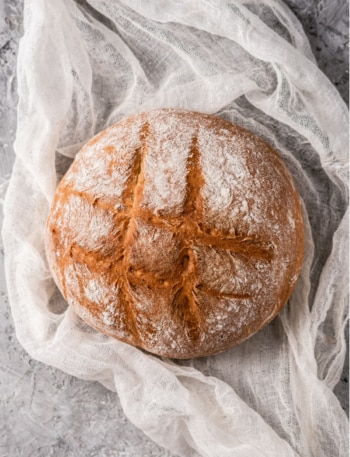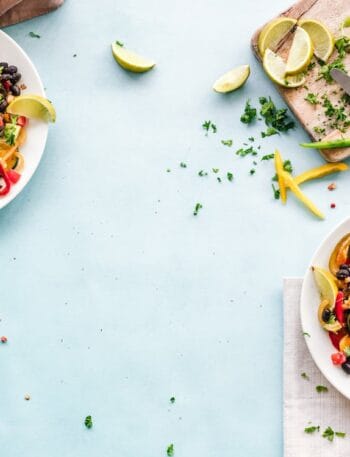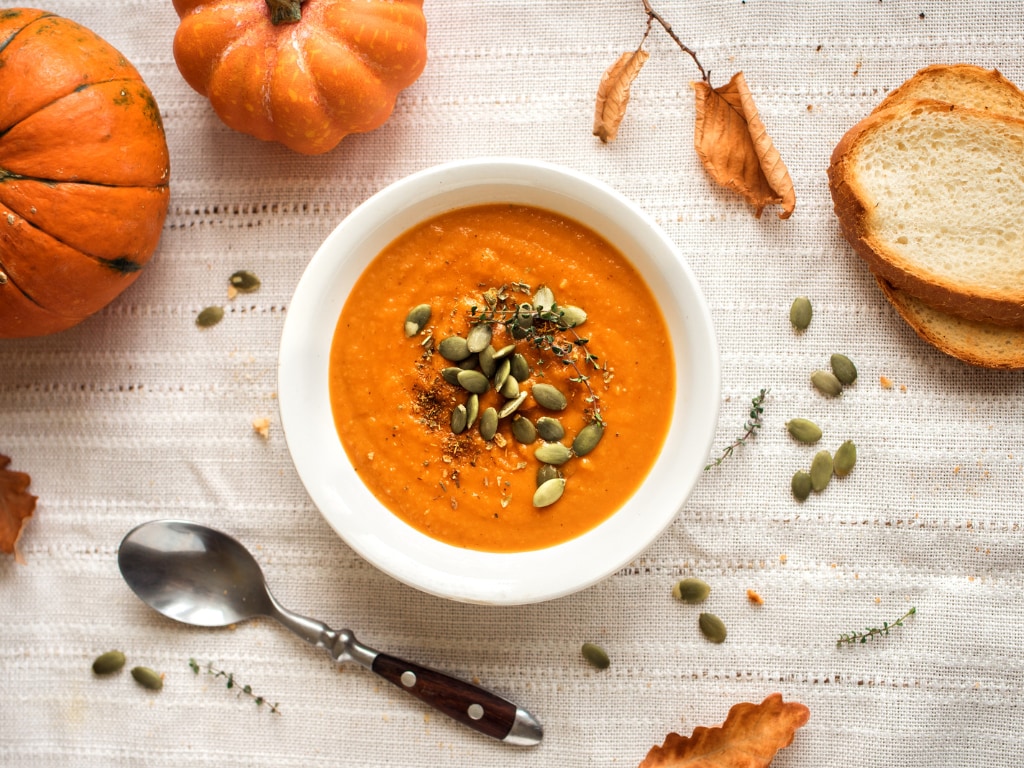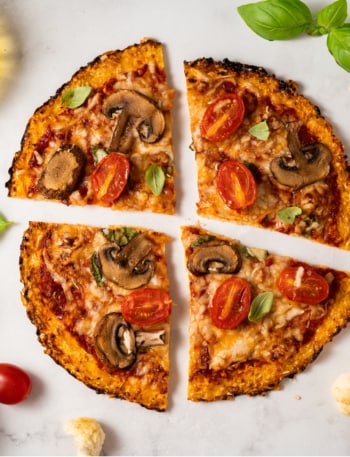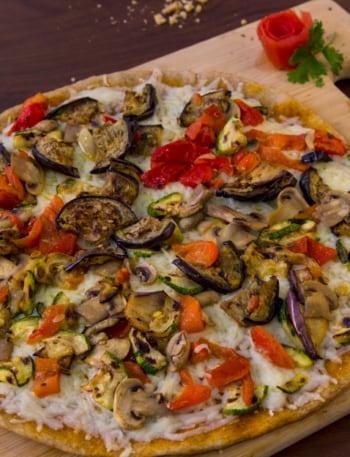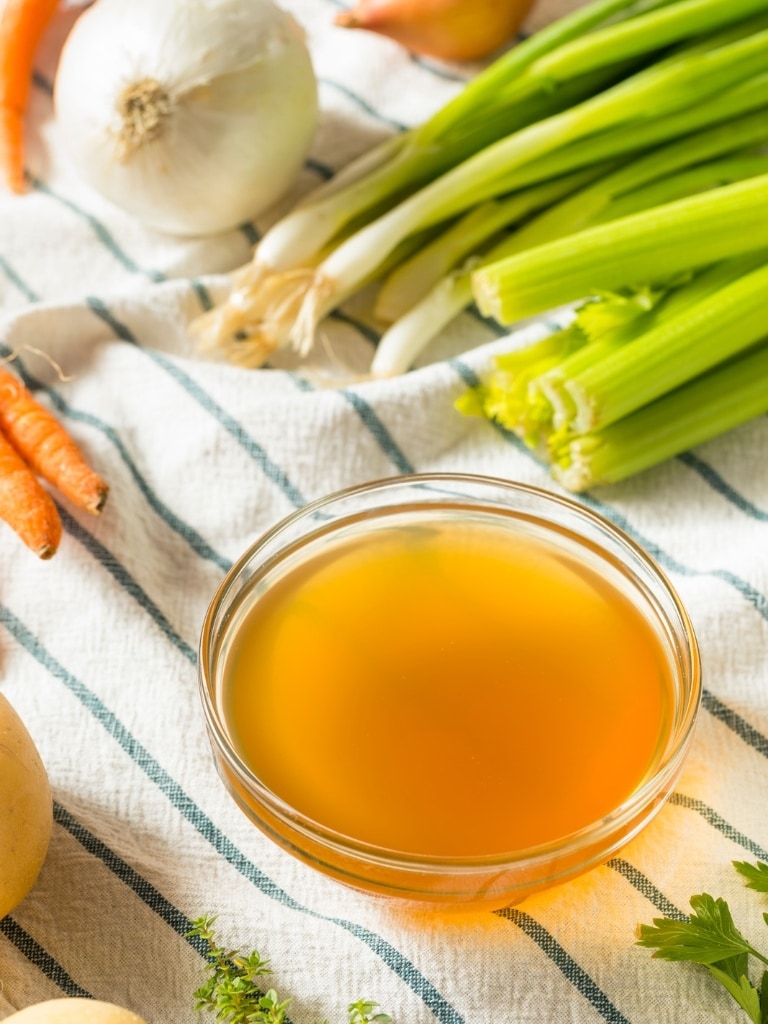Chicken Tikka Massala (Keto Friendly & Healthier Ingredients)
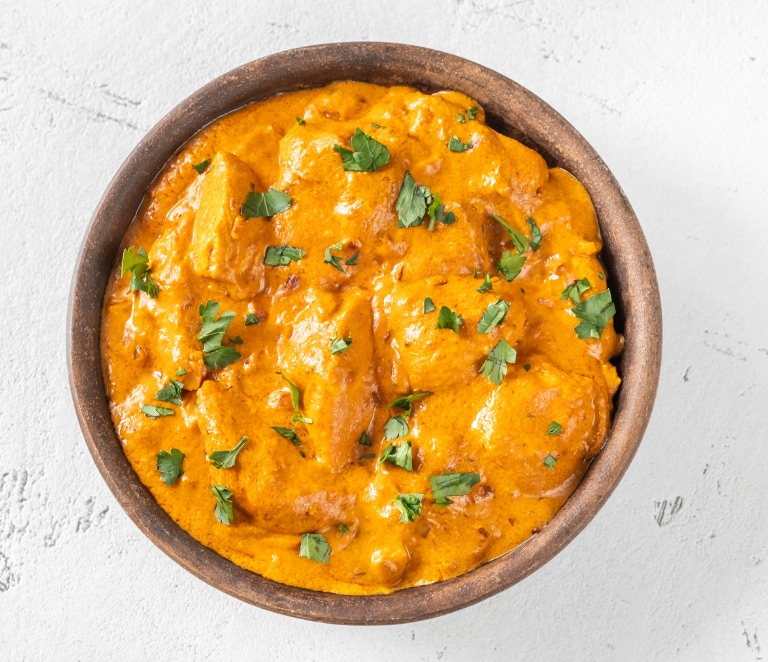
Chicken Tikka Masala is one of the most iconic and beloved dishes in Indian cuisine, known for its rich and creamy texture, bold flavors, and comforting qualities. This dish consists of tender chunks of chicken that have been marinated in a blend of yogurt and spices, then grilled or roasted to perfection. The chicken is then simmered in a luscious, spiced tomato-based sauce, often enriched with cream or coconut milk for a smooth, velvety finish.
While its origins are debated, many believe that Chicken Tikka Masala was created in the UK by South Asian chefs adapting traditional Indian recipes to local tastes. Despite its modern roots, it has quickly become a global favorite, appearing on menus in Indian restaurants all around the world.
This Chicken Tikka Masala recipe is keto friendly, easy and simple because it uses minimal ingredients, a quick marinade, and requires just a few straightforward steps. You will also find suggestions of healthier ingredients.
Chicken Tikka Masala can be healthy when prepared mindfully, but traditional versions may be high in calories, fat, and sodium. Modifications can make it a more balanced and nutritious dish.
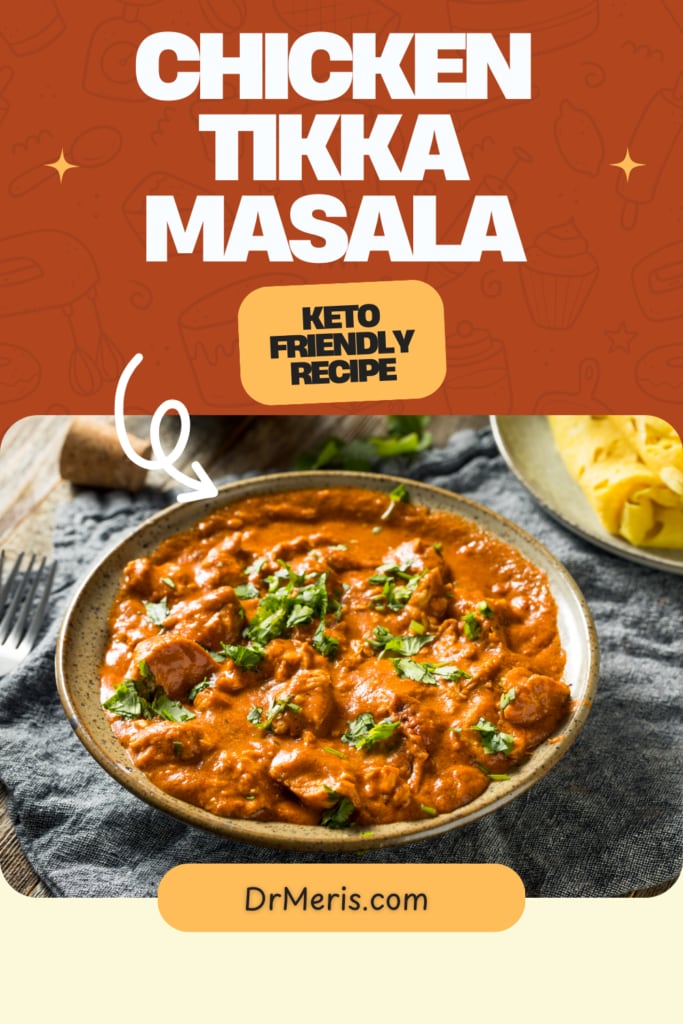
You may also like:
Healthy Tomato Sauce Recipe: Keto Friendly
Chicken Tikka Masala Ingredients with Health Benefits
Chicken Tikka Masala is a delicious, flavorful dish that incorporates a variety of ingredients with numerous health benefits. From lean protein to antioxidant-rich spices, this dish is packed with nutrients that support immune health, digestion, and overall well-being. Here’s a breakdown of the key ingredients in Chicken Tikka Masala along with their associated health benefits:

For the Chicken Marinade:
- Boneless Chicken
Chicken is a lean protein source, rich in B vitamins (especially B3 and B6) that support metabolism and brain health. It is also a great source of selenium, which helps protect cells from oxidative damage, and essential amino acids that promote muscle repair and immune function. - Plain Yogurt
Yogurt contains probiotics, which promote gut health by balancing beneficial bacteria in the digestive tract. It is also an excellent source of calcium, essential for bone health, and vitamin B12, which supports red blood cell production and cognitive function. - Lemon Juice
Lemon juice is high in vitamin C, which is essential for immune system function, skin health, and wound healing. It also aids digestion by promoting the production of digestive juices and has alkalizing properties that support overall detoxification. - Ginger-Garlic Paste
Ginger and garlic have strong anti-inflammatory and immune-boosting properties. Ginger improves digestion, reduces nausea, and relieves muscle pain, while garlic helps lower cholesterol, supports heart health, and has antioxidant effects. - Ground Cumin
Cumin is a rich source of iron, important for blood circulation and oxygen transport. It also aids digestion by stimulating digestive enzymes and has antioxidant properties that reduce inflammation and support immune function. - Ground Coriander
Coriander is known for its antioxidant properties, which help protect cells from oxidative damage. It also regulates blood sugar levels, making it beneficial for those with diabetes, and aids digestion by reducing bloating and indigestion. - Garam Masala
Garam masala is a blend of aromatic spices like cardamom, cinnamon, and cloves, all of which have various health benefits. Cinnamon supports blood sugar regulation, cloves have antibacterial properties, and cardamom improves digestion and detoxifies the body. - Turmeric Powder
Turmeric contains curcumin, a powerful anti-inflammatory and antioxidant compound. It helps reduce inflammation, support joint health, improve cognitive function, and may lower the risk of chronic diseases like heart disease and cancer. - Chili Powder
Chili powder contains capsaicin, a compound that boosts metabolism, promotes fat burning, and reduces pain. It also helps improve digestion by increasing digestive fluids.
For the Tikka Masala Sauce:
- Vegetable Oil or Ghee
Ghee is rich in healthy fats, particularly butyrate, which supports digestive health and has anti-inflammatory effects. It also contains vitamin A, which is vital for eye health. Vegetable oil provides unsaturated fats, which are heart-healthy fats that help lower cholesterol. - Onions
Onions are packed with antioxidants, particularly quercetin, which has anti-inflammatory effects. They are also a good source of prebiotics, which promote the growth of beneficial bacteria in the gut. Additionally, onions help lower blood pressure and cholesterol, supporting heart health. - Ginger-Garlic Paste
As in the marinade, ginger and garlic in the sauce enhance the dish’s anti-inflammatory and immune-boosting properties, promote digestion, and provide antibacterial benefits. - Chili
Chilies are rich in vitamin C and capsaicin, which promote fat burning, improve digestion, and boost metabolism. They also help improve circulation and reduce pain and inflammation. - Homemade Red Pepper Paste
Red peppers are an excellent source of vitamin A (in the form of beta-carotene) and vitamin C, both of which support immune health, skin health, and eye health. The capsaicin in red peppers boosts metabolism and helps with weight management. - Ground Cumin
Cumin, as mentioned earlier, is a good source of iron, aids digestion, and has anti-inflammatory properties that support overall health. - Ground Coriander
Coriander helps regulate blood sugar, aids digestion, and provides antioxidants that help protect cells from oxidative damage, promoting overall health. - Garam Masala
The spices in garam masala, like cardamom, cinnamon, and cloves, have numerous health benefits, including anti-inflammatory, antioxidant, and digestive properties, which enhance overall wellness. - Paprika
Paprika, especially smoked paprika, contains vitamin A and capsaicin. Vitamin A supports eye health, while capsaicin aids metabolism and promotes fat burning. - Turmeric Powder
Turmeric contains curcumin, which has anti-inflammatory and antioxidant properties. It supports joint health, may reduce the risk of chronic diseases, and boosts cognitive function. - Tomatoes
Tomatoes are rich in vitamin C, potassium, and lycopene, a powerful antioxidant that has been linked to a reduced risk of heart disease and certain cancers. - Heavy Cream or Coconut Cream
Heavy cream provides healthy fats and vitamin A, which promote skin and eye health. Coconut cream is rich in medium-chain triglycerides (MCTs), which support energy levels and brain health. - Water or Chicken Broth
Chicken broth, if used, provides minerals like calcium, magnesium, and potassium, which support bone and heart health. - Fresh Cilantro
Cilantro has detoxifying properties, helps eliminate heavy metals from the body, and is rich in vitamin C, vitamin K, and fiber, supporting immune, bone, and digestive health.
Potential Health Benefits
- Protein-Rich:
- The chicken provides a high-quality source of protein, essential for muscle repair and overall health.
- Spices and Ingredients:
- Spices like turmeric, ginger, garlic, and cumin have anti-inflammatory and antioxidant properties.
- Vegetables:
- Onions, tomatoes, or other vegetables, add fiber, vitamins, and minerals.
Potential Concerns
- Caloric Content:
- Traditional recipes often use cream, butter, or ghee, which can significantly increase calorie and fat content.
- High Saturated Fats:
- The use of cream or full-fat yogurt can contribute to saturated fat intake, which may be a concern for heart health if consumed in excess.
- Sodium:
- Restaurant versions or pre-packaged sauces can be high in sodium, potentially impacting blood pressure if overconsumed.
- Carb Pairing:
- Serving with naan or white rice adds carbohydrates, which can spike blood sugar levels if not balanced with fiber or protein.
Healthier Modifications
- Use low-fat yogurt or coconut milk instead of heavy cream.
- Opt for grilled chicken to reduce fat content.
- Add more vegetables (e.g., spinach, peas, bell peppers) to boost nutrition.
- Serve with brown rice or a whole grain alternative for added fiber (if not on a keto diet).
- Control portion sizes to balance calorie intake.
Heavy Cream Alternatives
If you’re looking for heavy cream alternatives in your Chicken Tikka Masala (or any other dish), there are several options depending on dietary needs, preferences, or what you have available. Here are some great substitutes for heavy cream:
1. Coconut Cream (Best for Dairy-Free)
- Flavor Profile: Slightly sweet, with a coconut flavor.
- Usage: This is a popular choice for Indian curries, as it pairs well with the spices. Use it in a 1:1 ratio to replace heavy cream.
- Tip: If it’s too thick, you can thin it with a little bit of water or vegetable broth.
2. Greek Yogurt (For Creaminess with Tang)
- Flavor Profile: Tangy, creamy texture.
- Usage: You can use Greek yogurt in place of cream. Be sure to stir it in at the end of cooking to prevent curdling. Use about 3/4 cup Greek yogurt for every 1 cup of heavy cream.
- Tip: Add it slowly to the sauce, and don’t let the temperature get too high once the yogurt is in.
3. Cashew Cream (Dairy-Free and Nutty)
- Flavor Profile: Mildly nutty, smooth, and creamy.
- Usage: Blend soaked cashews with water (about 1/2 cup cashews to 1/2 cup water) to create a smooth paste. Use this in place of heavy cream in a 1:1 ratio.
- Tip: Cashew cream adds a rich texture and is a fantastic alternative for vegan recipes.
4. Almond Milk + Olive Oil (Dairy-Free and Light)
- Flavor Profile: Light, with a slightly nutty flavor.
- Usage: Combine 3/4 cup unsweetened almond milk with 1/4 cup olive oil to mimic the richness of cream. This is a great option if you’re looking for something lower in fat than heavy cream.
- Tip: If the almond milk is thin, you can thicken it with a little cornstarch mixed with water.
5. Soy Cream (Dairy-Free Alternative)
- Flavor Profile: Neutral, slightly bean-like.
- Usage: Soy-based cream is a versatile substitute for heavy cream in both savory and sweet dishes. Use it in a 1:1 ratio.
- Tip: Soy cream can sometimes be thinner than dairy cream, so you might need to cook it longer to thicken the sauce.
6. Oat Cream (Dairy-Free)
- Flavor Profile: Mild and slightly sweet.
- Usage: This is another dairy-free option that’s thick and creamy. Use it in a 1:1 ratio to replace heavy cream.
- Tip: Oat cream is perfect for people with nut or soy allergies and works wonderfully in curries.
7. Evaporated Milk (Lower-Fat Alternative)
- Flavor Profile: Slightly caramelized, with a rich texture.
- Usage: Use in a 1:1 ratio for a lighter version of heavy cream. Evaporated milk will create a similar creamy texture but with less fat.
- Tip: Evaporated milk has less fat than heavy cream but still gives a nice creamy consistency.
8. Cream Cheese (For Tangy and Thick Texture)
- Flavor Profile: Tangy, creamy, and slightly dense.
- Usage: You can use softened cream cheese to replace heavy cream. Use about 3/4 cup cream cheese for every 1 cup of heavy cream, and mix it in until smooth.
- Tip: This will create a slightly thicker, tangier sauce. You may need to thin it with a bit of water or broth.
9. Milk + Butter (Easy Substitution)
- Flavor Profile: Rich but without the full thickness of cream.
- Usage: Combine 3/4 cup of whole milk with 1/4 cup of melted butter for a quick and easy substitute.
- Tip: This mixture adds richness to a dish without the full calories and fat content of heavy cream.
10. Tofu Cream (Dairy-Free)
- Flavor Profile: Mild flavor, creamy texture.
- Usage: Blend silken tofu with a bit of water or vegetable broth to create a creamy texture. Use in a 1:1 ratio.
- Tip: Tofu cream is great for a smooth, velvety consistency without dairy.
Which One to Choose?
- If you’re going for a rich, creamy texture similar to traditional heavy cream, try coconut cream, cashew cream, or soy cream.
- For a lighter alternative, evaporated milk or a milk-butter combo works well.
- For dairy-free options, coconut cream, oat cream, or cashew cream are excellent choices.
Frequently Asked Questions
1. Can I make Chicken Tikka Masala without yogurt?
Yes, you can substitute yogurt with coconut cream, cream cheese, or Greek yogurt (if you’re looking for a dairy-based substitute). These will still give the dish a creamy texture.
2. Can I make Chicken Tikka Masala ahead of time?
Absolutely! Chicken Tikka Masala actually tastes better the next day as the flavors have more time to develop. You can refrigerate it for 2-3 days or freeze it for up to 3 months. Reheat gently on the stove.
3. What can I substitute for garam masala?
If you don’t have garam masala, you can make a simple substitute using a mix of ground cumin, coriander, cardamom, cloves, and cinnamon. Adjust based on what you have available.
4. How can I adjust the spiciness of the dish?
To make the dish less spicy, reduce the amount of chili powder, and paprika. You can also add a bit more cream or yogurt to mellow out the heat.
5. Can I make this recipe vegan?
Yes, for a vegan version, use tofu or chickpeas instead of chicken. Replace the cream with coconut cream or cashew cream, and use plant-based yogurt for marinating.
6. Can I cook Chicken Tikka Masala in a slow cooker?
Yes! To make it in a slow cooker, cook the chicken in the sauce for 4-6 hours on low, then stir in the cream at the end, and simmer for an additional 10-15 minutes.
7. Do I need to grill the chicken for the best flavor?
Grilling or baking the chicken for the tikka part of the dish gives it a nice smoky flavor, but you can skip this step and cook the marinated chicken directly in the sauce if you’re short on time.
8. What should I serve Chicken Tikka Masala with?
Traditionally, Chicken Tikka Masala is served with basmati rice or naan (Indian flatbread). You can also serve it with roti, paratha, or pilaf rice. Avoid these options if you’re on a keto diet.
9. How do I store leftover Chicken Tikka Masala?
Store leftover Chicken Tikka Masala in an airtight container in the refrigerator for up to 3 days or freeze for up to 3 months. Reheat gently on the stove over low heat.
10. Why is my Chicken Tikka Massala sauce watery?
If your Chicken Tikka Masala sauce is watery, the common causes and fixes are:
- Too much water added: Reduce the amount of water in the recipe.
- Excess liquid from tomatoes: Simmer longer to reduce the liquid or drain canned tomatoes.
- Low heat: Increase the heat slightly to help thicken the sauce.
- Not enough thickening ingredients: Add more cream, yogurt, or cashew paste.
- Not simmering long enough: Let the sauce cook longer to evaporate excess liquid.
- Overcooked chicken: Cook chicken separately to avoid it releasing too much moisture into the sauce.
Quick Fixes:
- Cornstarch Slurry: If you need a fast fix, mix 1 tablespoon of cornstarch with 2 tablespoons of water and stir it into the sauce. Let it simmer for a few more minutes until the sauce thickens.
- Simmer without a lid: Allow the sauce to simmer uncovered for a while to help it thicken naturally as the water evaporates.
- Note: If you are on a keto diet don’t use cornstarch; let the sauce reduce naturally.
More Recipes:
Pumpkin Soup Recipe – Quick, Easy, and Healing
Healthy and Delicious Beet Soup Recipe

Chicken Tikka Massala (Keto Friendly & Healthier Ingredients)
Description
Ingredients
For the Chicken Marinade:
For the Masala Sauce:
Gariture
Instructions
-
Marinate the Chicken:
- In a bowl, mix the yogurt, lemon juice, cumin, coriander, turmeric, paprika, garam masala, chili powder, ginger, garlic, and salt.
- Add the chicken pieces and coat them thoroughly in the marinade.
- Cover the bowl and refrigerate for at least 1 hour, or overnight for the best flavor.
-
Cook the Chicken:
- Preheat your oven to 200°C (400°F), or you can cook the chicken in a grill pan or skillet if you don't want to use the oven.
- If using the oven: Thread the marinated chicken onto skewers (optional) and place them on a baking tray. Bake for about 20 minutes, or until the chicken is fully cooked and slightly charred at the edges.
- If using a pan: Heat a little oil or butter in a large skillet over medium heat. Cook the chicken in batches, browning the chicken on all sides for about 6-8 minutes, or until fully cooked.
-
Make the Masala Sauce:
- Heat oil or ghee in a large pan or skillet over medium heat.
- Add the finely chopped onion and sauté for about 5-7 minutes until the onions are soft and golden.
- Add ginger and garlic and sauté for another minute until fragrant.
- Add the ground coriander, cumin, turmeric, chili powder, and garam masala. Stir for a minute to toast the spices.
- Add the pureed tomatoes and red pepper paste and cook for 10-12 minutes until the tomatoes have softened and the sauce has thickened. You can use a hand blender to blend the sauce if you prefer a smoother texture.
- Add the cream and water (or chicken broth) and stir well. Simmer for another 5-7 minutes. Add sugar to balance the acidity of the tomatoes (optional).
- Season with salt to taste.
Start with 1/2 cup of water, and if you need a thinner sauce, add more gradually, stirring as you go. -
Combine Chicken and Sauce:
- Add the cooked chicken pieces into the masala sauce. Stir gently to coat the chicken in the sauce.
- Simmer for 5-10 minutes so the chicken absorbs the flavors of the sauce.
-
Garnish and Serve
- Garnish the Chicken Tikka Masala with freshly chopped cilantro.
- Serve with steamed basmati rice, naan, or roti.
Note
Tips:
- Red Pepper Paste: I used homemade red pepper paste, which gives the dish a rich color and a nice, slightly sweet undertone that balances the acidity of tomatoes.
- Heavy Cream Alternatives
- For Extra Flavor: You can grill or char the marinated chicken before adding it to the sauce for that signature smoky flavor.
- Spice Level: Adjust the chili powder and garam masala to suit your spice preference.
- Make Ahead: This dish tastes even better the next day, as the flavors meld together, so it's a great option for meal prep.
Chicken Tikka Masala (Standard Recipe with Heavy Cream)
Per serving (approx. 1 cup) – Estimated for a recipe that serves 4
- Calories: 380–450 kcal
- Protein: 30–35g
- Fat: 25–30g
- Saturated fat: 10–12g
- Carbohydrates: 12–20g
- Fiber: 3–4g
- Sugars: 5–7g
- Cholesterol: 85–100mg
- Sodium: 800–1,100mg
- Vitamin A: 15–20% of Daily Value
- Vitamin C: 10–15% of Daily Value
- Calcium: 8–10% of Daily Value
- Iron: 15–20% of Daily Value
These values are estimates and can change based on factors like the cut of chicken (e.g., using thighs vs. breasts), how much oil you use for frying, and the specific type of cream used.





